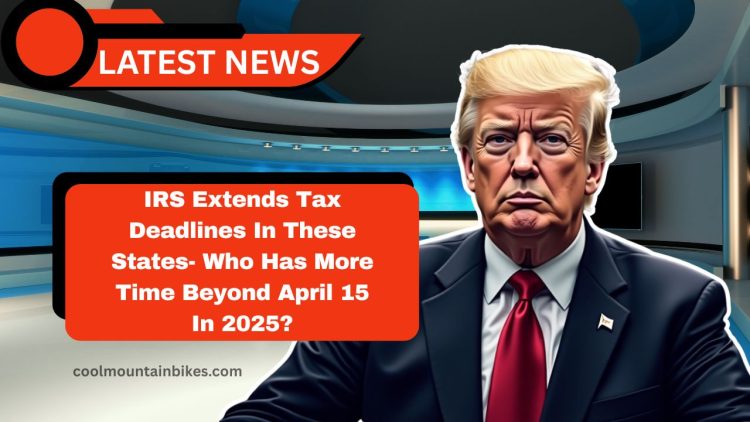While the majority of U.S. taxpayers must meet the April 15, 2025 filing deadline, the IRS has granted extensions to individuals and businesses in disaster-affected states.
In total, residents in parts of 13 states have been given additional time to file and pay federal taxes, depending on the severity and timing of recent natural disasters.
This relief provides much-needed breathing room for people impacted by tornadoes, flooding, and wildfires, and automatically applies to all taxpayers who reside in the affected regions.
Why the IRS Is Extending Tax Deadlines
The IRS often grants filing extensions for taxpayers in declared disaster zones, acknowledging the disruption that disasters can cause to financial and administrative routines.
When federal disaster declarations are made, the IRS adjusts its deadlines accordingly for residents, without requiring them to make a separate request.
According to the IRS, individuals with a registered address in a disaster area automatically qualify for the extension, with no additional action needed.
New IRS Deadlines by State (2025)
Below is a breakdown of the revised tax deadlines by state and region, depending on the nature of the disaster and the federal declarations made:
| State/Region | Extended Deadline | Applicable Counties |
|---|---|---|
| Alabama, Florida, Georgia, North Carolina, South Carolina | May 1, 2025 | All counties |
| Alaska | May 1, 2025 | City and Borough of Juneau |
| New Mexico | May 1, 2025 | Chaves County |
| Virginia | May 1, 2025 | 40+ counties and cities including Albemarle, Roanoke, etc. |
| California (Los Angeles County) | October 15, 2025 | Wildfire-impacted areas only |
| Arkansas, Kentucky, Tennessee | November 3, 2025 | All counties |
| West Virginia | November 3, 2025 | 12 counties including Boone, Raleigh, and McDowell |
Automatic vs. Requested Extensions
For taxpayers outside the disaster-affected areas, the standard October 15 extension remains available. However, this must be requested before April 15, and it only extends the filing deadline, not the payment due date. Any taxes owed must still be paid by April 15 to avoid interest and penalties.
Who Automatically Qualifies for Relief?
Taxpayers are eligible for the IRS’s disaster relief if:
- They live or operate a business in a federally declared disaster area.
- Their IRS address of record falls within the affected region.
- They had a tax obligation or deadline between the date of the disaster and the new extended deadline.
The IRS confirms that no action is required to receive this relief—those eligible will receive the benefits automatically.
Important Notes for Affected Taxpayers
- This extension applies to filing and payment of federal income tax, including quarterly estimated payments.
- Taxpayers who had previously scheduled electronic payments can cancel and reschedule them through their online IRS accounts if needed.
- Businesses, sole proprietors, and self-employed individuals are included in the extension.
The IRS’s decision to extend tax filing deadlines in several states provides vital flexibility for individuals and businesses grappling with the aftermath of natural disasters.
From tornadoes in Arkansas and Tennessee to wildfires in Los Angeles, the affected taxpayers now have time to recover before addressing their tax responsibilities.
Those in other regions can still apply for standard extensions if needed, but must ensure payments are made by April 15 to remain in good standing with the IRS.
FAQs
Can taxpayers outside the disaster zones request an extension?
Yes. They can file for an automatic extension using IRS Form 4868, giving them until October 15 to file (but not to pay).
Do the new deadlines apply to state taxes as well?
No. State tax deadlines may differ. Affected taxpayers should check with their respective state revenue departments.
Will penalties apply if someone in the eligible area files after the new deadline?
Yes. If the new deadline is missed, penalties and interest will apply, unless another qualifying condition is met.
